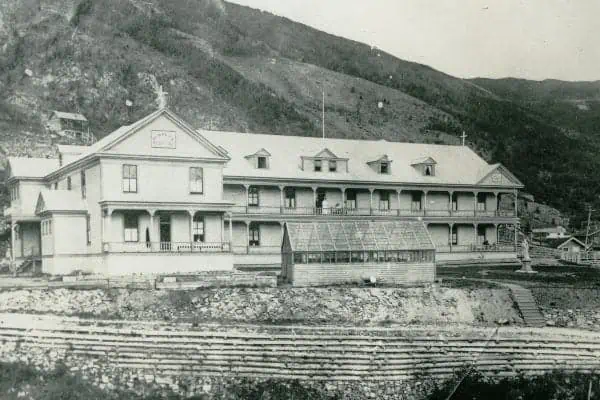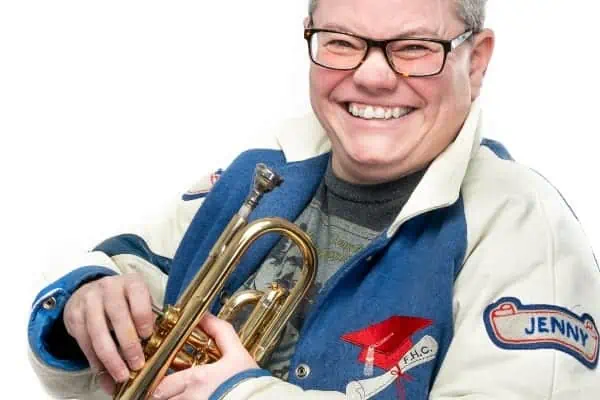“What’s that thing on the dike?”
“It’s art!”
“I thought it was an accident …”
… comments from the public overheard about Brandon Vickerd’s Northern Satellite installed in the lawn in front of the dike in Dawson City.
The Natural and the Manufactured is a series of artist talks, lectures and art installations, in its fifth year. It’s a joint presentation of the Klondike Institute of Arts and Culture Artist-in-Residence program and its ODD Gallery.
Two artists live in the residence for a month leading up to the show and create pieces specifically for the show: one to be installed in the gallery, and one outdoor installation.
This year’s offerings are intriguing.
It included two departures from the usual lecture format.
Jeanne Randolf is a well-known cultural theorist based in Winnipeg. Her method of research is to “free associate” while pretending to be on the brink of psychosis. She’s a psychoanalyst, as well, but in this role casts the audience in the role of a bemused psychoanalyst, listening to her.
“Terror is my muse,” she confided at the beginning of what I can only call “her performance”. “If I’m not scared to death, I don’t have that zip.”
The content of the lecture stayed fresh since she didn’t know ahead of time what she was going to say, and neither did the audience. I looked around the room and saw several wide grins during the course of the lecture.
It was a hoot.
She stated at the beginning that she intended to demonstrate that “natural and manufactured will drive you crazy if you try to keep them in two different categories.” She showed digital images of woodcuts from an old dictionary and free-associated from them, playing with the ideas of natural and manufactured.
She skipped gaily from Wittgenstein to pet snakes. Are shells manufactured by abalone? Do forests mass produce trees? Is bacon not naturally delicious?
She cautioned us to “beware of things that pinch your thinking” in a girdle-like fashion.
Having played the two concepts to a point of silliness, she then admired the fact that the series was called The Natural and the Manufactured because the two things are inextricably tangled.
Then on Sunday, Portland-based Harrell Fletcher led a group on a Lecture Hike. Fletcher is committed to “non-leader-oriented pedagogy” and, so, individuals in the group provided the content for the lecture, leading the group from place to place and telling stories of each place for over two hours. This was fascinating and fun. We shared our Dawson and came away richer for it, although its connection to the series’ theme seemed tenuous at best.
Being a concept-oriented series, lectures and artist talks happen before exposing the public to the actual art. The public is lured inside for these digital projections and talks in the KIAC ballroom before being allowed to view the art itself.
This year, both artist talks were accessible and entertaining.
Halifax-based artist Stephen Kelly introduced his Open Tuning. Kelly has installed four sculptural apparatuses in the gallery. Each aluminum rod moves and produces sound from two speaker cones.
The movement and sound come from two buoys installed by the Department of Fisheries and Oceans in the Gulf of Alaska and off the coast of Nova Scotia. They record a real-time stream of data, including wave height and ocean temperature, and send it by satellite to computers.
Kelly’s installation, powered by two computers and a couple of other electronic devices, receives this data from the Internet and translates it into the sound and motion in the gallery.
The overall effect combines whale-like low tones with realistic wave crashing sounds and the whirr and click of electric motors. Each buoy’s data moves one structure back and forth on the walls, and one that’s suspended from a single point from the ceiling.
Go see – and hear – this, if you can.
If you’re in Dawson, you won’t be able to help seeing Vickerd’s piece out on the dike. Vickerd has precisely re-created the first of the satellites used for GPS positioning, in birch wood, and has finished it realistically with paint – white and silver and black.
He’s used backhoes to gouge a landing line into the spotty dandelion-laced lawn, down by the dike. The white quartzy Dawson soil sprays out from the sculpture.
This is not realistic – a satellite leaving orbit would burn-up in the earth’s atmosphere, and certainly the slender arms of the satellite would not survive this kind of landing.
In his artist talk, Vickerd talks about people navigating by GPS and, so, distancing themselves from the place they really are. So he’s crashed the tool used for this questionable habit into a particular place.
This concept is not clear on the dike, but it does make you think of the stuff we’ve put up around our planet and what it would be like if it came plummeting down.
These two installations continue until September 18.




